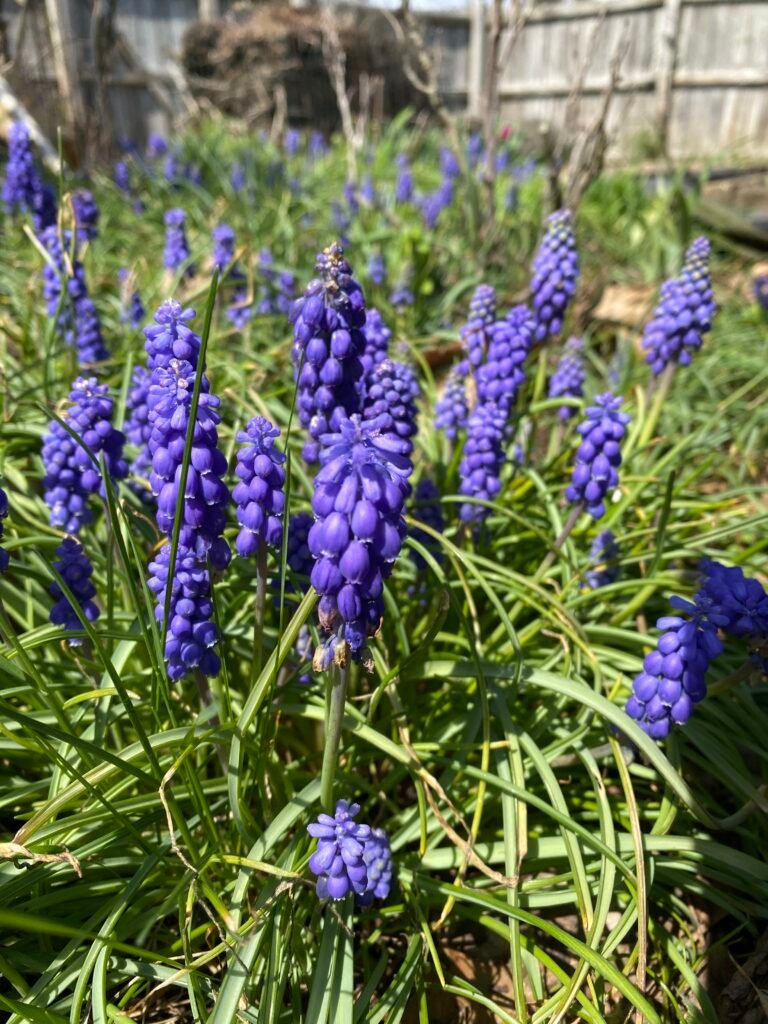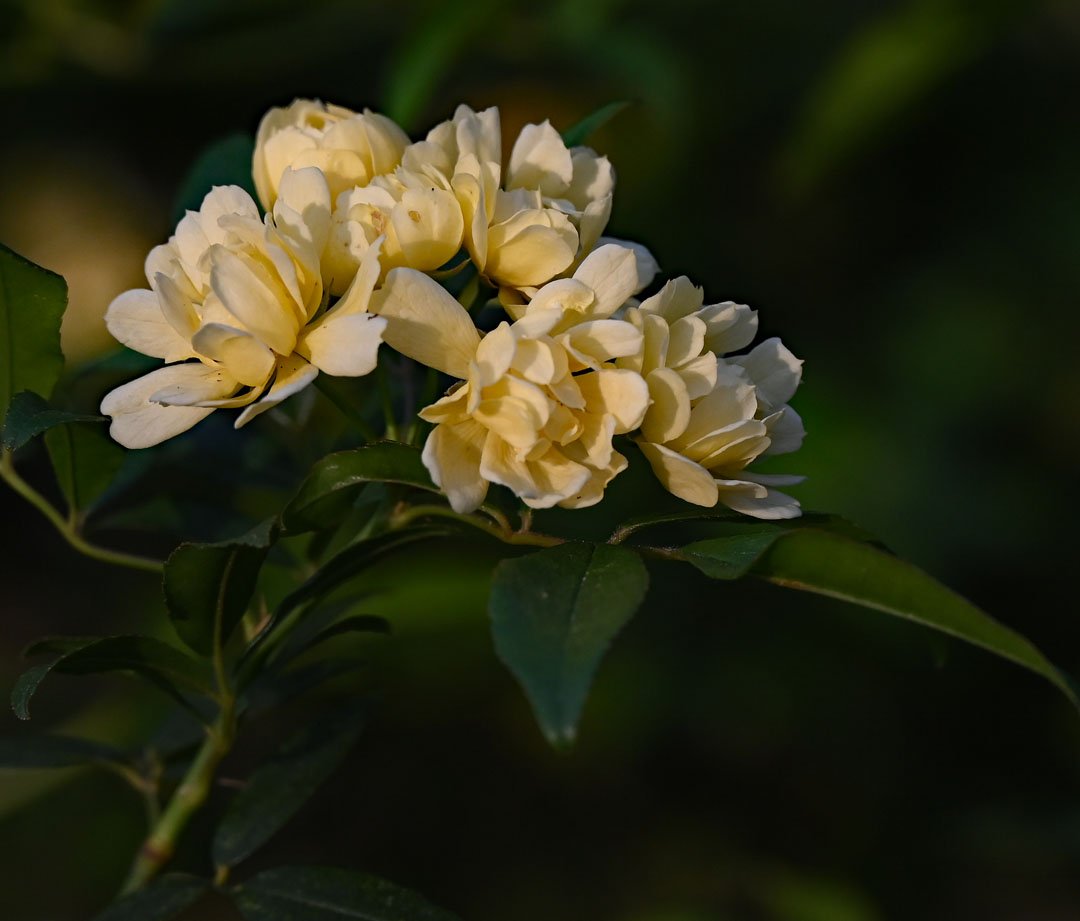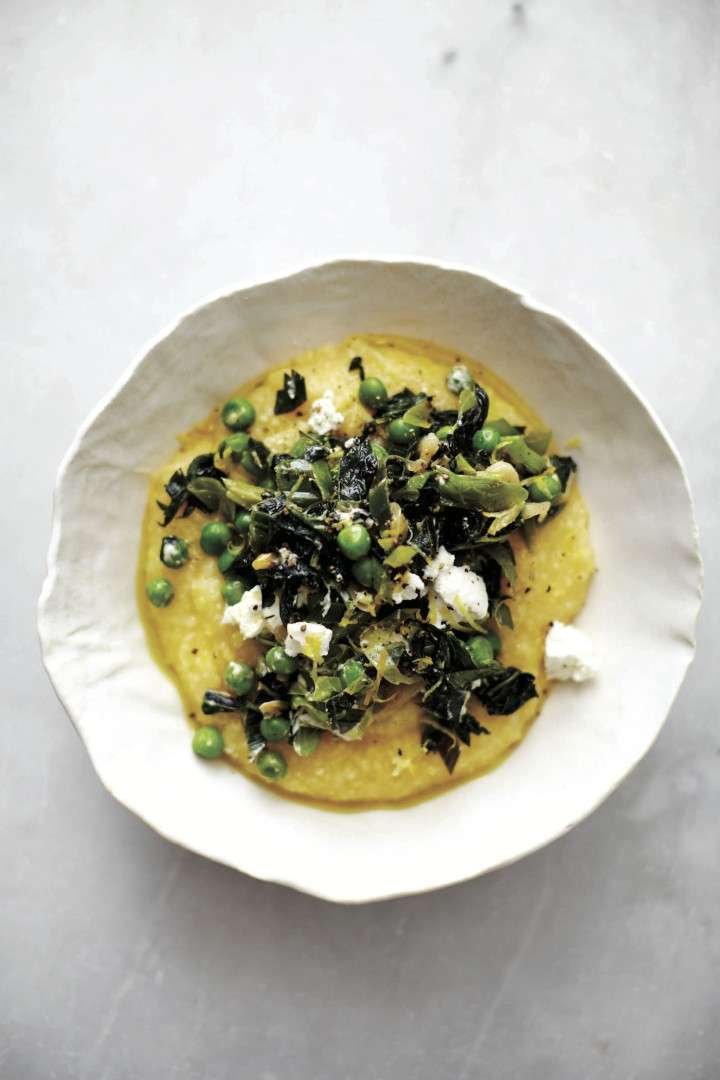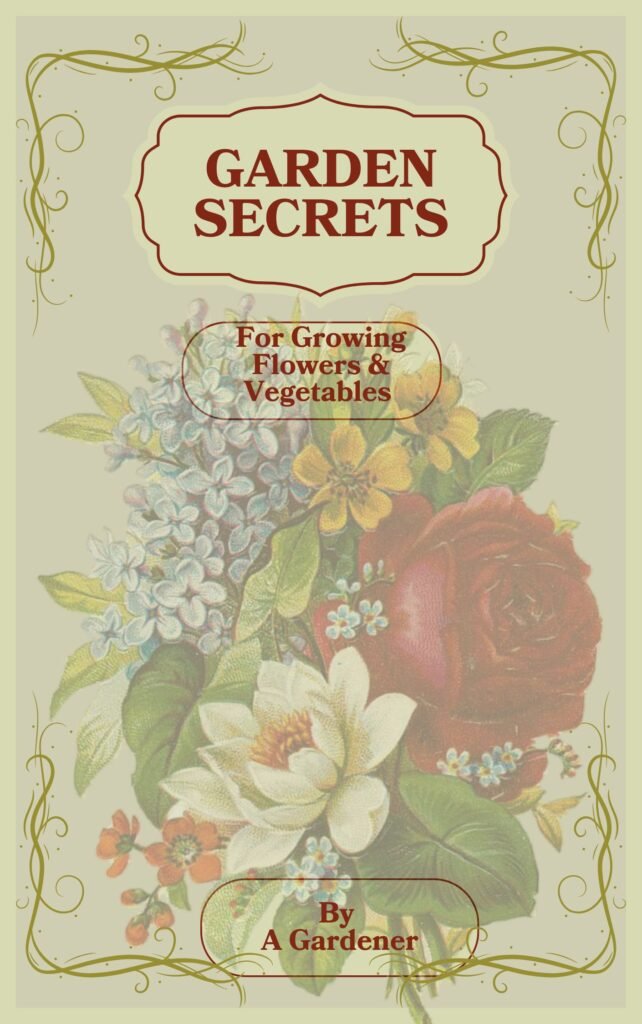 IT’S HARD TO THINK of a brighter botanical bright spot than the one that Coleus creates—whether in a container design, or planted in a garden bed.
IT’S HARD TO THINK of a brighter botanical bright spot than the one that Coleus creates—whether in a container design, or planted in a garden bed.
And it’s hard to think of a more Coleus-filled place than Rosy Dawn Gardens, a Michigan-based mail-order nursery that for 23 years has specialized in Coleus, Coleus and more Coleus – with a collection at the moment of 200-plus varieties. Not just upright ones, but mounding and trailing varieties, too, and in every imaginable leaf color and pattern—and shape, size and texture of foliage.
Pam Quackenbush, with her husband, Glenn, owns and operates Rosy Dawn. I reached out to Pam, who began collecting Coleus in the 1990s, for a bit of a guided tour through the diversity of the species, and some practical tips on growing them and more. (That’s Pam’s favorite, ‘Allison,’ above.)
Read along as you listen to the April 14, 2025 edition of my public-radio show and podcast using the player below. You can subscribe to all future editions on Apple Podcasts (iTunes) or Spotify (and browse my archive of podcasts here).
coleus with pam of rosy dawn gardens
Download file | Play in new window |
Subscribe: Apple Podcasts |Spotify
Margaret Roach: How’s spring going out there, Pam? I’ve had snow the last two mornings before we’re recording this [laughter].
Pam Quackenbush: Yeah, we’ve had some flurries. It’s quite chilly today, but the sun is out most of the day, so that’s a good thing.
Margaret: Yeah. Well, we have a cheerful topic, which is Coleus, so that’s positive. And I’ll just say I had found your website in a search online and then learned more about you from a longtime Coleus breeder, Chris Baker of Baker’s Acres Greenhouse in Ohio, who I did a “New York Times” garden column with this spring. His family’s nursery is retail in-person only, not mail-order, so he had recommended me to you, and that was how we sort of actually met on the phone. And of course I clicked right over and had a little bit of a shopping binge. Oops [laughter]. Wow, Pam, that’s a lot of Coleus you have there. Is it 200 and something now?
Pam: Yeah, it’s 200 and something. It varies, but it’s really hard to turn any Coleus down. So we grow quite a few.
Margaret: So we gardeners use them as “annuals,” but in their homeland, they are perennials. Yeah. Tell us a little bit about the origin story of these plants.
Pam: Well, Coleus are native to Southeast Asia and parts of Africa and Northern Australia, Sri Lanka. So they are definitely equatorial and tropical, and they love a nice warm, somewhat humid environment that can be a little tricky in parts of the United States to replicate. But most of our summers, even in the Midwest, definitely fill the hot and humid requirement.
Margaret: And they’re in the mint family, which you can tell if you do let them bloom, but everybody sort of pinches them and we’ll talk a little bit more about that; people don’t want them to bloom a lot of times and are growing them for the foliage. But you could tell they were in the mint family if you see the flowers. And I think the species is scutellarioides.
Pam: Very good.
Margaret: It has a lot of syllables, that word. It does. Yes, exactly. A lot of vowels in there [laughter]. So it seems like the horticultural version of Coleus has evolved in recent decades. We’ve come to hear about sun coleus, even though we thought of it years ago as a shade annual. And besides the extravagant range of colors, there are also plants of different scales and habits. So tell us a little bit about the breadth, so to speak, especially of the habits. They’re not all upright shrubby ones like years and years and years ago they used to be, with large leaves.
 Pam: Yeah, some of the native plants are very trailing, they have a trailing habit, and then there’s mounding plants which are kind of in between. And they tend to not grow straight upright, but they may grow upright briefly, and then they start to mound. And then there’s of course what we think of as the traditional Coleus, the classic Coleus, which is an upright, almost shrubby plant.
Pam: Yeah, some of the native plants are very trailing, they have a trailing habit, and then there’s mounding plants which are kind of in between. And they tend to not grow straight upright, but they may grow upright briefly, and then they start to mound. And then there’s of course what we think of as the traditional Coleus, the classic Coleus, which is an upright, almost shrubby plant.
Margaret: Yeah, I think I read in the International Coleus Society, I believe they have a Facebook page; that’s where I found it. They say they’ve found records of more than 1,800 named cultivars, not all of which they find a source for at the moment. I think they said, I don’t know, several, maybe 400 or 500 are in commerce now, but there have been that many that have been named, which is amazing.
Now there are, I see sometimes seed packets of Coleus, but that’s not what you’re doing, right? You’re not growing them from seed.
Pam: Yeah, correct. There’s a definite difference between cutting-grown or clones, which is what we sell, and seed-grown varieties. They both have their merits, but for the home gardener seeds are a little tricky. Coleus seeds are a little tricky to start from seed and you have to start early because they start out very tiny and take a while to grow. So if you want something that you’re going to plant out in May, here in Michigan anyway, you’ve got to start pretty early to have a plant that’s that size, whereas cuttings start faster, grow faster, and they’re also exact clones of the mother plant, whereas seeds have a little more variability to them.
Margaret: So you deal with cutting-grown plants, you said the clones, and when you ship plants, they’re kind of like a big liner or I don’t know what the other word for that is, but it’s a rooted cutting. Is that what you’re doing? So you have these stock plants; I’m imagining the greenhouse is just filled with these stock plants. It must be so colorful before you start taking all the cuttings, huh?
Pam: Yes, we have many, many, many stock plants. We grow the unpatented varieties or non-patented varieties; that’s the majority of our stock plants. And the patented varieties we buy cuttings from; they come from all over the world overseas. But sometimes we keep stock plants of those, too, because we need to photograph them and we need to take pictures of them so we can show people what they look like when they’re grown.
Margaret: Right. You can’t reproduce them and sell rooted cuttings of them because that’s against the patenting, but you can keep your own stock plant that you purchased.
Pam: Yes. And so can the people who buy them, if they want to overwinter it in their house and keep it for another year, that’s perfectly fine. They just cannot propagate and sell them.
Margaret: Right. So I mean, I guess technically it’s called pigmentation patterning in nature—and it can be in birds, the plumage of birds, or it can be in leaves—the concentration and location of the colorful compounds. That’s what makes them so irresistible to me. Whether it’s an upright one or a trailing one or a mounding one or whatever, I just am consistently blown away by how a single Coleus, the leaf of a Coleus, can just inspire an entire garden design, really—like the palette. Do you know what I mean? It can have the most interesting color combinations within it that can suggest to you how to tie together a big container design, or a bed or whatever. And I often in the spring—and I’ve said this before on the show—but I often am walking around the garden center in spring when the annuals are available, the flowering annuals, with a favorite Coleus in my hand. That’s how I start, is with a piece of that Coleus in my hand and I’m looking to let it inspire me.
 Pam: I do know what you mean. You can start looking from a distance and see a bed of Coleus, and then you walk up closely and you see that it’s just not a red and a yellow Coleus and a green. They’re pixilated, they have borders, they have spots. There’s all kinds of nuances in the coloration that you can build a container planting around, a bed around. It’s fabulous, the variety of colors.
Pam: I do know what you mean. You can start looking from a distance and see a bed of Coleus, and then you walk up closely and you see that it’s just not a red and a yellow Coleus and a green. They’re pixilated, they have borders, they have spots. There’s all kinds of nuances in the coloration that you can build a container planting around, a bed around. It’s fabulous, the variety of colors.
Margaret: And the leaf textures, that’s something else that I feel like has gotten more wacky and wild and exciting. Even if you decided on a color sort of theme that you were looking for—I mean, I’m thinking, O.K., if I wanted purple and bright green sort of more in the chartreuse, the lighter, bright green color—well, I could go with ‘Fishnet Stockings,’ which has that deep purple veining on bright green big leaves. Or I could go with ‘Inky Fingers’ [above], which is like this mounding plant, I think. And its leaves are like what I think they’re called the duckfoot shape; they’re a funny little shape and they’re deep purple and they’re edged with bright green. So even if you say, “Oh, I’m looking for a purple and green Coleus…” Well, hello, have at it [laughter]. There’s a million of them.
Pam: There’s a million in red and green, too, or red. And it’s incredible how many variations you can get with just a couple of colors.
Margaret: Yeah. I mean, how in the world do people decide which to choose when they’re on your website? I mean, I was overwhelmed, in a very good way, but it’s a lot. I mean, any to recommend? Do customers just email you and say “Help!” or…?
Pam: Yeah, we get a lot of those. And we can’t design everyone’s garden for them, but we do have a lot of people ask us to do that. We get a lot of people that just say, “Just send me what you think is good, and I want 18 Coleus, you pick; three of each.”
Margaret: Sweet.
Pam: So we will do that if they want to trust us. But I think a lot of people spend hours, even days, on putting together their Coleus orders.
Margaret: One thing that Coleus, among many things that Coleus has going for it, and is unusual in foliage, I think, is the color orange, and shades of sunset and sunrise kind of colors. There’s pinks in other genera of plants, in foliage, but the orange is, and I’m sure there’s certain plants that have orange, but this is really where there’s a lot of possibilities relative to other types of plants, I think. And that’s a color that’s exciting to add to your designs, not just from flowers, I think.
Pam: Well, and because flowers come and go, but leaves are forever [laughter].
Margaret: Months and months and months.
Pam: Exactly right. You can get a whole season of color from these plants. But orange was a tricky one. When we first started, we had ‘Rustic Orange’ and there was another variety called ‘Klondike,’ and ‘Winter Sun,’ though I think ‘Winter Sun’ was Vern’s.
Margaret: Oh, Vern Ogren. He was Color Farm; the late Coleus breeder.
Pam: Yes. And many of our non-patented varieties are Vern’s varieties, and we’re all indebted to Vern for the work that he did back when not too many people were paying close attention to Coleus. But now, especially with the new hybrids that are coming out from the big companies, the big hybridizers, the patented plants, and there’s so much orange now to choose from. And they’re strong, they’re robust. And so people who are looking for orange, this is the golden time for them, because there’s been a lot of work done on them and they’re fabulous.
Margaret: And as I said, it’s just a color that it’s hard to get that much of a big splash of it otherwise.
Pam: Right.
 Margaret: Yeah. So I mean the leaf shape, I just want to double back for a minute to. The leaf shape thing is just staggering [laughter]. I mean there’s the one recently that is skeletal; there was one, isn’t there one that, maybe it’s named ‘Skeletal,’ but that’s what the leaf looks like—a fish skeleton or something. [Above, ‘Fancy Feathers Copper’ and ‘Sienna.’]
Margaret: Yeah. So I mean the leaf shape, I just want to double back for a minute to. The leaf shape thing is just staggering [laughter]. I mean there’s the one recently that is skeletal; there was one, isn’t there one that, maybe it’s named ‘Skeletal,’ but that’s what the leaf looks like—a fish skeleton or something. [Above, ‘Fancy Feathers Copper’ and ‘Sienna.’]
Pam: Yeah, there’s ‘Bone Fish;’ that may be what you’re thinking of. That’s one of the Under The Sea series of coleus. It’s deeply, deeply indented, practically to the main center vein.
Margaret: And ferny. Yeah.
Pam: And some of the edging, too, never ceases to amaze me: spiky, toothy, other strange little shapes; I don’t even know what to call them. But again, you walk up close and you’re like, oh my gosh, this is crazy, these edges.
Margaret: The genetics. I mean, a geneticist I would think would have a lot of fun trying to figure the genus out or this species in particular out.
Pam: Oh, I think they do. And Coleus are very, very generous with sports, which are spontaneous mutations. And that’s one of the problems with the Coleus world sometimes is the same sport will spontaneously happen in different nurseries around and everybody isolates it and names it something different, when they’re all essentially the same plant. But there’s a lot of naming and renaming and going on in Coleus world.
Margaret: So we were talking about how do you choose and how do customers choose, and sometimes they say to you, “Send me 18 of Pam’s favorites” or whatever [laughter]. But what are some of the ones that you would love for people to look at? Maybe some that aren’t just your favorites, but are sort of undiscovered—like unsung heroes even or whatever, some that really speak to you, I don’t know.
 Pam: Well, I think probably my personal alltime favorite is one of our plants called ‘Allison’ [photo at top of page]. We’ve been selling it for a long time, but it’s got this just beautiful pink overcast, and depending on what kind of light it’s grown in, it can be a softer pink in lower light or it can be a very bright, almost magenta pink. And there’s a lot of other colors in it, too, mixed in: yellows and purples and things. But the overall effect is a beautiful pink plant. And that’s probably has my heart as my alltime favorite.
Pam: Well, I think probably my personal alltime favorite is one of our plants called ‘Allison’ [photo at top of page]. We’ve been selling it for a long time, but it’s got this just beautiful pink overcast, and depending on what kind of light it’s grown in, it can be a softer pink in lower light or it can be a very bright, almost magenta pink. And there’s a lot of other colors in it, too, mixed in: yellows and purples and things. But the overall effect is a beautiful pink plant. And that’s probably has my heart as my alltime favorite.
I really love ‘Tiger Lily.’ It’s another Color Farm Vern Ogren introduction; it’s not a super-great seller. We always sell some, but if people… and that’s a problem being a mail-order nursery. I thought if people could walk in here and see this, they would snap it up like crazy.
And of course ‘Mariposa’ [photo near bottom of page] is a big, blowsy purple and pink plant that sells like crazy. But you were talking about leaf textures, and ‘Mariposa’ has a big wide leaf, and it’s soft, and you can almost pet it as opposed to a crispier, crunchier leaf on some of the other ones.
But as far as new plants go, Dummen’s new plant ‘Santa Monica’ [above], it’s kind of a mounding creature. And when we first got it in, when it was released, we sold it for the first year without having grown it out then. So we planted it, and then when we saw it in all its glory, full-blown glory, it was just like, “Oh my gosh, it’s purple, it’s pink, it’s got spots, it’s crazy.” [Laughter.] It’s just a gorgeous, gorgeous plant.
And another recent introduction, a patented plant, is ‘Solar Flare.’ That’s I guess a Ball introduction. And again, like many of that type of plant, they start out slow and then they just turn into the most magnificent plants. And ‘Solar Flare’ has been a great seller. It’s probably our bestselling new introduction in a long time, but just absolutely gorgeous. And the first year we only ordered a couple hundred and we were sorry. So this year we ordered lots and lots and lots of cuttings of ‘Solar Flare.’ So hopefully we have enough.
And ‘Road Trip’ [below], another trailing one that is magnificent, that’s come out in the last few years. It’s similar to our ‘Trailing Rose’ in the sense that it’s like a dark burgundy with a pink center, but it’s been improved to the point where it doesn’t bloom like a lot of trailing plants. A lot of trailing ones, unfortunately, are quick to bloom and you have to do a lot of pinching with them.
 Margaret: Right. And that’s really one of the big things that in recent years the breeding has focused on at some of these big places—like you mentioned Ball and Dummen and so forth, or the University of Florida breeding program—is to kind of get the plants to be slower to go to bloom so that you get more leaves, leaves, leaves.
Margaret: Right. And that’s really one of the big things that in recent years the breeding has focused on at some of these big places—like you mentioned Ball and Dummen and so forth, or the University of Florida breeding program—is to kind of get the plants to be slower to go to bloom so that you get more leaves, leaves, leaves.
Pam: Yeah. Late-blooming and sun-tolerant. Those are the two things people are looking for.
Margaret: So I wanted to talk a little bit about care and so forth, and then also to hopefully have a minute to end up with how to carry one over if I have one that I’m afraid I might not be able to find ever again [laughter].
Care-wise, I mean I know some of them say they’re sun Coleus, but generally speaking, I don’t put them in the most baking spots, but maybe I could. I don’t know. I’m in the Northeast. So I think it depends also what region you’re in.
Pam: Yeah, I agree. Sun-tolerant does not mean sun-loving. And I’ve heard that expression, too. We firmly believe that some protection from the hottest sun of the day is really beneficial to the overall look of your Coleus. But a lot of people don’t have that; we have people that grow Coleus in Arizona beautifully out in the full baking sun. But you really do want to probably stick to those newer introductions that are bred for sun tolerance, rather than some little hothouse Coleus. Because you mentioned that a lot of Coleus have come and gone, and that’s one reason why: is they may be gorgeous, but they just don’t have the stamina to make it in a wide variety of gardens.
Margaret: And in that kind of situation, you’re going to really need to be attentive to the watering. These are not plants that want to dry out.
Pam: They don’t want to be sitting in water and soggy, but neither do they want to be completely dry. And you just have to think again to where they originated from—they originated in a jungle. They don’t like the full baking sun. But like I said, if you want that, then go for the newer hybrids.
Margaret: I saw on your website you had a tip not to use cedar mulch around them. I’m not a cedar mulch person, but that was interesting.
Pam: Yeah, we’ve just had people report to us that some of their Coleus didn’t do well with cedar mulch. We’ve never done a scientific study; I don’t want the cedar mulch people to come back and yell at me, but I just think that if you do use cedar mulch, you maybe pull it back away from the plant, and not have it touch it.
Margaret: Some of the oils in it might be bothering the plant.
Pam: Right.
Margaret: Do you feed them? Are we still pinching? And what’s the signal to pinch?
Pam: Pinching is up to you. If you let the plant bloom, it switches into reproduction mode and it never quite recovers if it gets super-bloomy. And so keeping it pinched back from the beginning is helpful. My mother loved the blooms, because she liked the insects and the hummingbirds and things that were attracted to them, and so she didn’t mind at all. But I think the majority of people feel that they kind of look unkempt once they start to bloom. But it’s certainly a personal decision. I see plenty of people posting pictures of their Coleus blooming away and they seem to love it, and that’s great [laughter].
Margaret: And do they need supplemental feeding?
Pam: I wouldn’t do it full strength. We prefer a time-release fertilizer that you put in in the beginning of the season. And if you have a long season, if you’re in the South… and with us, we’re lucky if we get three or four months of good Coleus growing weather in Michigan. So you may want to repeat the feeding if you have a longer growing season. But for us, one shot of time-release fertilizer seems to do it, and it’s not too much, because you don’t want to put so much fertilizer on it. It actually can change the coloration. It can make it too dark. Too much nitrogen can make it very green.
 Margaret: So finally, again, if I found one that I really loved, or if someone gave me one that I didn’t even know the name of it or whatever—that’s happened to me, too, I didn’t even know the name. And it’s like, how am I going to find it again, because there are so many? So do I grow it as a houseplant in the offseason or what’s your best recommendation? [Above, the unusual leaf shape of ‘Red Coral.’]
Margaret: So finally, again, if I found one that I really loved, or if someone gave me one that I didn’t even know the name of it or whatever—that’s happened to me, too, I didn’t even know the name. And it’s like, how am I going to find it again, because there are so many? So do I grow it as a houseplant in the offseason or what’s your best recommendation? [Above, the unusual leaf shape of ‘Red Coral.’]
Pam: In the offseason as a houseplant Coleus like a lot of bright light, so unless you have a big door wall or something… And definitely they benefit from some additional grow lights. A lot of people overwinter them, and the best way to overwinter Coleus is to take a cutting rather than bring in the full plant. Because when you bring in the dirt, you might bring in some little hitchhikers, too.
Margaret: And when would I take that? Would I do that in August?
Pam: Late summer. And don’t take from a cutting that has a blossom on it or a bud. You want to look very carefully, because once they start to bud, then they never really make a great plant, and some really want to bud. So the best time to take it is early enough in the summer where they haven’t really started to think about, “Oh my gosh, the days are getting shorter. I need to reproduce.” And they start blooming.
And some people just put them in water and keep them on the windowsill. But the best results really are if you take a cutting and put it right into a really good high-quality potting soil. The soil is really important.
Margaret: So make a rooted cutting in a potting medium as soon as possible.
Pam: Yeah, you just keep it moist. You don’t have to give it a whole lot of extra care.
Margaret: Well, Pam, people can go on a binge on your website like I did [laughter], and have some fun because really it’s like an encyclopedia and I so appreciate it. I’m so glad to have met you and I hope we’ll talk again. Thank you.
Pam: Well, thank you for having me. [Below, Mariposa.’]
more from rosy dawn gardens
prefer the podcast version of the show?
 MY WEEKLY public-radio show, rated a “top-5 garden podcast” by “The Guardian” newspaper in the UK, began its 15th year in March 2024. It’s produced at Robin Hood Radio, the smallest NPR station in the nation. Listen locally in the Hudson Valley (NY)-Berkshires (MA)-Litchfield Hills (CT) Mondays at 8:30 AM Eastern, rerun at 8:30 Saturdays. Or play the April 14, 2025 show using the player near the top of this transcript. You can subscribe to all future editions on iTunes/Apple Podcasts or Spotify (and browse my archive of podcasts here).
MY WEEKLY public-radio show, rated a “top-5 garden podcast” by “The Guardian” newspaper in the UK, began its 15th year in March 2024. It’s produced at Robin Hood Radio, the smallest NPR station in the nation. Listen locally in the Hudson Valley (NY)-Berkshires (MA)-Litchfield Hills (CT) Mondays at 8:30 AM Eastern, rerun at 8:30 Saturdays. Or play the April 14, 2025 show using the player near the top of this transcript. You can subscribe to all future editions on iTunes/Apple Podcasts or Spotify (and browse my archive of podcasts here).















Leave a Reply